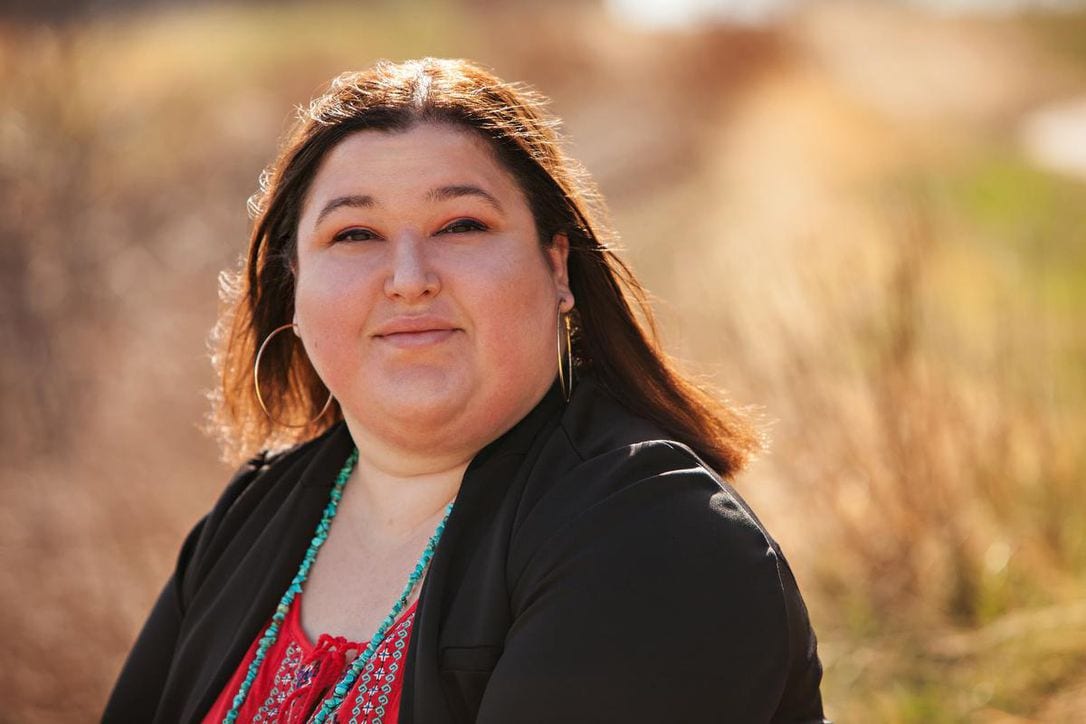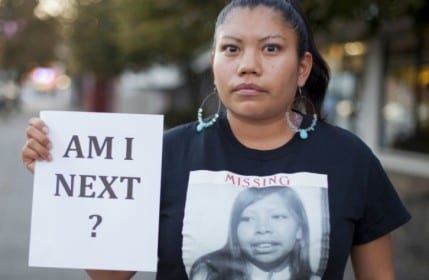
by admin_lauth | Jan 21, 2019 | Cyber Crime, Missing Person, Personal Investigations, Technology, Tips & Facts
 You receive a phone call and hear the voice of someone you don’t recognize. They tell you they have your child and will kill them unless you pay a ransom – they direct you not to call police or you will never see your child again.
You receive a phone call and hear the voice of someone you don’t recognize. They tell you they have your child and will kill them unless you pay a ransom – they direct you not to call police or you will never see your child again.
What would you do?
You tell the person on the other end of the phone not to hang up. You don’t want to disconnect with the one person that can reunite you with your child. You plead for your child’s safe return. “Please don’t hurt her. I will do whatever you want,” you say. And, you would!
They demand you go to the bank and wire a ransom of several thousand dollars. Do you call the police? Do you pay the ransom and hope the thug will return your child to you safe?
A child going missing is every parent’s worst nightmare, and for those who do have a missing child – living with such ambiguity is said to be the most traumatic of human experiences.
Sounds like a situation that only happens in the movies, right? Or, something that only happens to the wealthiest people in society.
The Federal Bureau of Investigation (FBI) has declared virtual kidnapping a violent crime and issuing warnings to parents that scammers are targeting parents and demanding a ransom in exchange for the safe return of children they kidnapped . . . well, virtually kidnapped. Police throughout the country are following suit, issuing warnings in their communities.
Police throughout the country are following suit, issuing warnings in their communities.
 What is a Virtual Kidnapping?
What is a Virtual Kidnapping?
A virtual kidnapping scam is an attempt to dupe victims into paying a quick ransom. The virtual aspect of the scam involves staging a scene on the phone to convince a person that a loved one has been kidnapped, following with a demand for ransom.
According to the FBI, “The success of any type of virtual kidnapping scheme depends on speed and fear. Criminals know they only have a short time to exact a ransom before victims unravel the scam or authorities become involved.”
Typically, the scam is executed by calling a victim claiming they have kidnapped a loved one, then demand a ransom in exchange for the loved one’s safe return.
Valerie Sobel is one such person who did receive a call from a person who said, “We have your daughter’s finger. Pay up or you’ll get the rest of her body in a body bag.”
Petrified, Sobel rushed to a money transfer location to pay the ransom, wiring $4,000 to the person who claimed to have kidnapped her daughter.
Valerie made many frantic phone calls to her daughter’s cell phone and after many hours had passed, her daughter Simone called her back totally confused but safe.
Basically, scammers call random numbers hoping to find a person who they can convince, while other times these scammers research Facebook and other social media platforms for names and numbers. If a scammer calls 100 people, chances are at least one will instantly pay.
Another way it may go down is a scammer calls you and you hear a child crying, “Mom, please help me.” Panic immediately sets in. You think it is your child. Then a man’s voice comes on the phone and calls you by your first name. This legitimizes the caller and you immediately ask them to just tell you what they want. What mother would not empty her bank account in exchange for her child’s safety.
If you don’t think you could become a victim, please read on.
 Virtually Kidnapped Daughter
Virtually Kidnapped Daughter
According to the Washington Post, Wendy Mueller lives in historic Leesburg, Va., and never thought she would become a victim of a virtual kidnapping scam.
One afternoon, while standing at her kitchen sink, she received a call from a number she did not recognize but answered.
She heard screaming and it sounded like her 23-year old daughter’s voice begging for help.
Then a man’s voice tells her, “we have your daughter.”
The caller told Mueller to put her phone on speaker, get her purse and phone charger and get into the car.
The man asked, “How much cash can you get right now?”
$10,000,” Mueller replied.
The man told her not to contact anyone for help or they would kill her daughter.
Mueller’s daughter attends college hundreds of miles away and she had no way of knowing her daughter was safe.
“They told me they were actually targeting someone else, someone they would be able to get a lot of money for. But they said my daughter intervened when they tried to grab him. And that sounded exactly like something she would do,” Mueller said.
“I was terrified,” Mueller continued. “They told me they wouldn’t hesitate to kill her.”
The caller had told Mueller he had hacked her phone and knew every move she was making. For hours, he told her to go to small stores and offices across Northern Virginia, where she wired the max amount of usually $1,900 each time to names and addresses in Mexico that the caller had given Mueller.
Mueller cross-crossed the state following his directions and making payments, until nightfall came.
Mueller had kept asking to speak to her daughter.
“They kept promising me: ‘As soon as you send the last one, you will talk to her,’” Mueller said.
The caller told Mueller he was a professional and part of a group of kidnappers – a huge organization – who do this all the time and kill.
The man told Mueller they had placed a set of headphones on her daughter so she could hear everything, so her daughter would know if her mother did anything to cause her death.
Mueller thought of stopping passersby but didn’t want to chance the kidnapper knowing.
“It was torture,” Mueller said.
As it turned out, her daughter was in class, safe and sound. Mueller had been scammed.
No one is immune
Thousands of families throughout the country have become targets of these malicious scammers.
According to FBI kidnapping expert, Agent Eric Arbuthnot, several organizations use these scams regularly to make money.
“Thousands of dollars in ransom,” said Arbuthnot. “And you’re talking about a criminal organization that is capable of doing more than one kidnapping at a time.”
According to Arbuthnot many of the cases have been happening on the West coast and along the border involving criminal organizations from Mexico, some claiming to be members of the cartel.
The FBI has seen recent increases in California, Nevada, New York, and Texas and increasing on the east coast.
Monroe Police Department in Connecticut said by using social media, scammers can identify a victim, look up relatives, and reference names of family members and friends to make the call appear legitimate.
FBI Supervisory Agent Christopher Johnson said his office in St. Louis, Missouri, deals with these types of crimes. “Scammers will often mention specific facts about the parent or victim, likely from information they were able to obtain online.”
Authorities say about one in five kidnapping cases are successful resulting in the criminal getting their ransom and not getting caught. While extortion has been around for decades, virtual ransom kidnapping calls are increasing around the country.
With this emerging scam, the FBI has launched a nationwide campaign to warn parents to fight back against “virtual kidnapping.”
 If you receive a virtual kidnapping ransom call
If you receive a virtual kidnapping ransom call
Unlike traditional kidnapping schemes, a “virtual kidnapper” has not actually kidnapped anyone. According to Federal Bureau of Investigation, if you receive a call from an individual demanding a ransom for the safe return of a kidnap victim, it is suggested you quickly evaluate the following to determine if you are receiving a legitimate ransom call:
- Caller insists you stay on the phone.
- Call does not come from your child’s cell phone.
- Caller tries to stop you from contacting the kidnap victim.
- Call includes demand for ransom to be paid via wire transfer.
- Ransom amounts may decrease quickly.
Knowing what to do
Police say it is best to hang up the phone but:
- If you engage the caller, don’t call out your loved one’s name.
- Deliberately try to slow the situation down and ask to speak to your child directly.
- Ask “proof of life” questions like, “How do I know my loved one is okay?”
- To gain confirmation if your child is an actual kidnapping victim, ask questions only your child would know such as the name of a pet.
- Listen very closely to the voice of the person speaking, if possible record the call.
- If possible, have someone else try to call your child’s cell phone, school, by text, social media, etc., to confirm their safety.
- To buy time, repeat the caller’s request and tell them you are writing down the demand, or tell the caller you need time to make arrangements.
- Don’t agree to pay a ransom, by wire or in person.
- Don’t deliver money in person.
- Immediately call your local FBI office and police.
According to the National Crime Information Center (NCIC), as of March 31, 2017, there were 86,618 active missing person cases in the FBI database, with 8, 792 entered as involuntary.
Experts agree that an actual kidnapping with a ransom demand is quite rare but all experts urge parents to be vigilant.
To read the FBI warning, please click here.

by admin_lauth | Jan 11, 2019 | Personal Investigations, Resources, Technology, Tips & Facts
 How easy would it be to kidnap a child in a crowded place? Maybe the park, walking home from school or even sleeping in their own bedroom. Over again, we see parents of missing children making pleas for the safe return of their children on the news. We see the Amber Alerts and Facebook posts and immediately picture our own children’s faces, thinking “What if it happened to me?” A common reaction to something so traumatic.
How easy would it be to kidnap a child in a crowded place? Maybe the park, walking home from school or even sleeping in their own bedroom. Over again, we see parents of missing children making pleas for the safe return of their children on the news. We see the Amber Alerts and Facebook posts and immediately picture our own children’s faces, thinking “What if it happened to me?” A common reaction to something so traumatic.
A young child becoming the victim of a predator is every parent’s worst nightmare, but the fact is, it is happening every day to parents throughout the country and our own fears do not wane just because our children are getting older.
I am a parent of four grown children and a mother who has worked in the field of missing persons for over 25 years. Every day I interacted with parents who were desperately searching for their missing child. Their pain unimaginable. Very quickly I realized the crime of abduction does not discriminate based upon a child’s age.
Commonly, we think of small children when we hear the word kidnapping and we think as our children age, they are safer, but the fact is, they can become even more vulnerable as they approach adulthood.
While teenagers are venturing out, without the protective eye of a parent, there is even more chance they can cross paths with a potential kidnapper. It is our responsibility as parents to guide our children throughout their lives and hopefully provide them with some tools that will keep them safe.
According to the National Center for Missing & Exploited Children (NCMEC), approximately 800,000 children are reported missing each year in the United States. That number accounts for nearly 2,000 per day.
The Federal Bureau of Investigation (FBI) estimates a relatively small number, approximately 115 of those missing children are abducted by strangers and listed as an “involuntary” abduction in the national database of missing children. However, this number does not account for children (to include teens), who are listed in the FBI National Crime Information Center (NCIC) in various categories such as “Endangered Missing,” “Runaways” or “Other.” Many of these disappearances are considered “long-term” with more than a year having passed with no resolution or explanation as to how or why the child disappeared. The fact is, we just don’t know, therefor accurate statistics impossible.
One thing we all can do as parents is prepare our children. Much of the following information and tools have proven to save lives.
- Communicate with your children
Predators do not look like the “Boogieman.” Strangers look like everyone else. Children need to understand that everyone is a stranger, even women and seniors. It is not about being unsociable, explaining this is about being cautious.
- Agree to a code word
Strangers have no business asking a child for directions or a lost pet. Many times, a predator will try to coerce a child into coming with them voluntarily without causing a scene by telling them they were sent by their parents to pick the child up. Agree to a simple “code word” like “Giraffe” or “Cheetos” that your child can remember and tell them to only trust an adult who knows the code word.
- Walking Away
Children should be taught to trust their instincts and walk away if a stranger approaches them. Though not all people are dangerous, it is always more important to be safe than being polite.
- Don’t put your child’s name on personal items
Children will tend to trust others who know their name. Never put your child’s name on personal items such as clothing or backpacks.
- Just scream
If approached, children should be taught to scream and run. Reassure your child the likelihood of being approached by a stranger is minimal but should it happen, to scream “This is not my dad” or “Fire” while running away.
 The stakes are high when a child becomes the target of a predator. It really is a matter of life or death. According to the FBI, statistically when a child is abducted by a stranger, the likelihood of recovering them alive diminishes with each hour that passes.
The stakes are high when a child becomes the target of a predator. It really is a matter of life or death. According to the FBI, statistically when a child is abducted by a stranger, the likelihood of recovering them alive diminishes with each hour that passes.
When a predator has targeted its prey, survival depends upon fighting back. For example, if approached with a knife or gun and told to get in a car, statistically the child or teen have more of a chance surviving if they fight back at the initial crime scene. Survival rates drop when a child is transported to a second crime scene.
- Communication
As children get older and spend more time away from parents, it is important to communicate openly with them. They need to know the dangers and reality of abduction without feeling fear which can be paralyzing.
- Not alone
Children should never answer the door when home alone or answer the phone and tell the caller their parent is not home.
- No compromises
Use the “Buddy System” and teens should always inform their parents where they are going and with who. No compromises.
- No shortcuts
Children should avoid shortcuts through empty parks, fields, and alleys. It is better to always remain in a well populated area to be safe.
- Life-saving technology
Use a GPS on their phone. There are free Apps such as Life 360. The App can be loaded on both the child’s phone and the parent’s phone and track location. Personally, my children are all grown with their own families now but my daughter and I both use Life 360 to keep tabs on each other. Though teens may demand their space, their safety trumps the right to privacy.
Remember, promote a home atmosphere that is open so kids can let you know what is going on in their lives. It is important to help them to have an understanding and confidence you want the best for them. Thomas Lauth has been in the private investigation industry for over 30 years, and in the cases of missing children, he stresses the importance of communication between parent and child, “We often get calls for missing children and teens. Once located and reunited with their families, we often educate parents or caregivers on tenets that would prevent this from occurring again. Regardless of circumstances, the most important thing is communication. Not only open and honest communication between parent and child, but communication safety concerning things like social media. In a world where young people are glued to their devices, it’s paramount that they remember to have awareness of their surroundings. Communicate, Educate, Communicate.”
Teaching children techniques to avoid an abduction
The window of opportunity to save oneself from danger might be seconds and children need to feel confident enough to make a split-second decision. In addition to coercion, abductors use intimidation. There are some techniques you can practice at home to build their self-confidence should they ever be face to face with a kidnapper.
- Practice yelling “Stop, Stranger” or “Fire” to draw attention and yell as loud as they can.
- Practice the Windmill technique which means rotating arms in a big circle so a potential attacker can’t get a good grip.
- Practice the Velcro technique by having your child grab and hold onto something, not letting go. They should also learn to scream while doing this.
If a child is abducted and somehow placed in a vehicle, they should know they need to take any opportunity they can to escape while trying to keep a cool head.
- Children should be taught not to be passive but proactive.
- Try to open the passenger side door quickly or jump in the back seat and try to escape through the rear doors.
- If placed in a trunk, they should be taught not to panic but to look for the “release” that opens the trunk upon pulling on it. Tear all the wires to the tail lights and brakes if possible.
I know this is a very serious and scary topic and just the thought of having to explain to an innocent child that some people are out to hurt them is incredibly uncomfortable, but when teaching others about fire safety, Benjamin Franklin said, “An ounce of prevention is worth a pound of cure.” It applies throughout life.
Kym Pasqualini is the founder of the Nation’s Missing Children Organization and the National Center for Missing Adults and worked with law enforcement and families of missing persons for over 25 years. Kym continues to work with media nationwide to raise awareness of missing children and adults.

by admin_lauth | Oct 25, 2018 | Criminal Investigation, Missing Person
 Indigenous women in this country are more likely than any other group to be raped or murdered. The salt in this gaping wound is they are also least likely to see justice. These are very passive terms, but there are no others, because the amount of data available about violent crimes against indigenous women is dwarfed in comparison to those of other groups. Last year, there were 5,646 Native American women entered into the National Crime Information Centre (NCIC) as missing. As of June 2018, there had been 2,758 reported missing. Many of their families have claimed no one bothered to investigate.
Indigenous women in this country are more likely than any other group to be raped or murdered. The salt in this gaping wound is they are also least likely to see justice. These are very passive terms, but there are no others, because the amount of data available about violent crimes against indigenous women is dwarfed in comparison to those of other groups. Last year, there were 5,646 Native American women entered into the National Crime Information Centre (NCIC) as missing. As of June 2018, there had been 2,758 reported missing. Many of their families have claimed no one bothered to investigate.
The jurisdictional issues surrounding cases occurring on reservations is a giant knot of Christmas lights; difficult to unravel, involving federal, state, and tribal law. It can sometimes be unclear to investigating bodies exactly who should be looking for answers. These cases become stillborn while law enforcement plays jurisdictional musical chairs—trails go cold, witnesses disappear, or develop amnesia, evidence is eroded. These women are not likely to be found, nor are their cases likely to be prosecuted. The disappearance of Ashley Loring HeavyRunner is a chilling example. She went missing from the Blackfeet Reservation in Montana in June of 2017. Her sister begged for help from the Indian Bureau of Affairs, and the FBI did not investigate until March of 2018, nine months later.
Despite the fact tribes on the reservations are guaranteed self-government by the Constitution, the more serious crimes fall under the jurisdiction of the FBI. The FBI is not obligated to notify them if a member of their tribe is reported missing or murdered. On top of that, the crimes do fall under tribal jurisdiction are placed in the hands of a woefully understaffed force. “A lot of times it doesn’t go beyond the missing persons report,” said Marita Growing Thunder, a 19-year-old murdered and missing indigenous women (MMIW) activist.
 In fact, the work being done to preserve information about murdered and missing indigenous women is being performed in large part by private citizens, like Annita Lucceshi, a PhD student at the University of Lethbridge in Southern Alberta. “I realised how difficult it is to get a sense of just how many murdered and missing women there are because it changes constantly and there is so little official information,” Annita told Independent. The database she has compiled goes back a little over a century, and she described her experience with obtaining accurate information to be heavy labor. “The police are not helpful. Typically, I get no response at all. If I do, they say they don’t collect the data, or that they won’t be able to pull that information.”
In fact, the work being done to preserve information about murdered and missing indigenous women is being performed in large part by private citizens, like Annita Lucceshi, a PhD student at the University of Lethbridge in Southern Alberta. “I realised how difficult it is to get a sense of just how many murdered and missing women there are because it changes constantly and there is so little official information,” Annita told Independent. The database she has compiled goes back a little over a century, and she described her experience with obtaining accurate information to be heavy labor. “The police are not helpful. Typically, I get no response at all. If I do, they say they don’t collect the data, or that they won’t be able to pull that information.”
It gets worse. In preparation for his film Wind River, director Taylor Sheridan paid a handful of lawyers to compile a statistic regarding murdered and missing indigenous women. After three months, they came back empty-handed, but had learned some disturbing facts along the way. As recently as 2013, sexual assault of a Native woman by a non-Native could not be prosecuted because it was a state crime on federal land. Natives accused of crimes against non-Natives can be prosecuted twice, by the federal government and by tribal police. This was rectified when the Violence Against Women Act gave criminal jurisdiction over non-indigenous people who commit sexual violence against Native American women.
 In 2015, the Department of Justice announced they were developing the Tribal Access Program for National Crime Information (TAP) so tribes can enter and view information in the federal NCIC database, thereby streamlining muddled communications between investigating bodies. Ten tribes were selected for the beta-test of this new system, but as of 2016, some had not received their TAP terminals. Once again, the wheels of justice turn at a glacial pace for missing and murdered indigenous women.
In 2015, the Department of Justice announced they were developing the Tribal Access Program for National Crime Information (TAP) so tribes can enter and view information in the federal NCIC database, thereby streamlining muddled communications between investigating bodies. Ten tribes were selected for the beta-test of this new system, but as of 2016, some had not received their TAP terminals. Once again, the wheels of justice turn at a glacial pace for missing and murdered indigenous women.

by admin_lauth | Aug 28, 2018 | Investigations, Missing Person, News and Media, Tips & Facts
If you are a missing person, it helps to be white

(Jasmine Moody vanished in Detroit, Michigan on December 4, 2014.)
Jasmine Moody, a 22-year old Texas Women’s University student mysteriously vanished on December 4, 2014, while visiting a friend in Detroit, Michigan. Nearly four years later, police are no closer to figuring out what happened to her. News coverage of her disappearance has long since vanished from the scene too.
Approximately 7:30 p.m., the evening of December 4th, Jasmine was last seen leaving her friend’s home in the vicinity of the 3700 block of Baldwin, in the Van Dyke and Mack area of Detroit. Her family, who lives in Texas, is convinced foul play is involved in Jasmine’s disappearance and disappointed in the police department’s response and ensuing investigation.
“My daughter was real popular. She had a lot of friends. She was very social and energetic,” Jasmine’s mother Lisa Kidd told Dateline. “She always had a smile on her face. Always, always.”
Jasmine had known she wanted to be a nurse since she was 16 and described as a well-rounded student at Texas Woman’s University. According to her stepfather Patrick Kidd, Jasmine was a straight-A student, danced, and was training to be part of the U.S. Armed Forces through her school’s ROTC program.
According to police, Jasmine had developed an online relationship with Brittany Gurley, a woman who lived in Detroit. Just a few months after meeting online, Jasmine and Brittany had developed a strong friendship and Jasmine flew to visit Brittany and her family for Thanksgiving.
On the evening of December 4th, the two women allegedly got into an argument about Jasmine’s social media posts. Brittany and her family would later tell police that Jasmine put on a hoodie and walked out of the house.
Little else is known about her disappearance. No major ground search was conducted, and ongoing media exposure on a national level has been minimal.
 In contrast to Jasmine Moody’s case, Lauren Spierer, a 20-year old student at Indiana University, vanished June 3, 2011, after an evening out with friends in Bloomington, Indiana. Lauren, who grew up in Scarsdale, an affluent town in Westchester, New York. Her disappearance quickly garnered national press attention but remains unsolved.
In contrast to Jasmine Moody’s case, Lauren Spierer, a 20-year old student at Indiana University, vanished June 3, 2011, after an evening out with friends in Bloomington, Indiana. Lauren, who grew up in Scarsdale, an affluent town in Westchester, New York. Her disappearance quickly garnered national press attention but remains unsolved.
“Lauren’s disappearance has been and continues to be the most heart-wrenching experience of our lives,” Lauren’s family posted on Facebook on June 4, 2018, seven years after her disappearance. “I remember writing a few short months after Lauren’s disappearance that I never thought I would see an October without answers. I could never have imagined we would still be searching for Lauren seven years later. I end this now as I start each morning, hoping today will be the day.”
After an evening out at Kilroy’s Sports Bar with friends, Lauren was last seen on 11th Street and College Avenue in Bloomington at approximately 4:15 a.m. She had left her cell phone and shoes at the bar, presumedly taking her shoes off in the beach-themed bar’s sand-filled courtyard.
National news quickly began covering Lauren’s disappearance while hundreds of volunteers assembled to distribute thousands of fliers and help conduct ground searches of the area. A billboard overlooking the Indiana State Fairgrounds, along Fall Creek Parkway, asks the public for any information that would lead to the whereabouts of Lauren.

(Thousands of flyers of missing person Lauren Spierer have been distributed throughout the country.)
Hundreds of volunteers continued to turn out daily to help the family in their search.
Lauren’s case was profiled on popular America’s Most Wanted in 2011, leading to dozens of leads but not that one the family needed. Over the years, dozens of news media outlets have covered Lauren’s story.
Early on, Lauren’s parents hired private investigators and today, maintain an active Facebook group.
In one very revealing and heartfelt post, Lauren’s mother writes, “I could not have imagined on June 3, 2011, that my life would ever have any semblance of normalcy. Unfortunately, that word will never be applied to our lives. You learn to live with routines which get you through your days, weeks, months, and years. We will never know normal. Some of the things taken for granted in ordinary families are so far removed from ours it’s difficult to fathom. They range from everyday life events, a wedding, a birth and yes sadly death. What I wouldn’t do to hear Lauren’s voice or even just to notice a text on my phone. Something so simple as a text. My heart breaks at the thought of it. Well, those responsible will never be able to imagine. I have said it before and I know it’s redundant but what could have been an accident in a few short hours became a crime. The worst nightmare any parent or sister could imagine.”
Every day Lauren’s family simply hopes for answers. That’s all any family of a missing person could ask for.
Two young women, one black, one white, both ambitious students couldn’t be treated more differently by the media. One becomes nearly a household name, the other nearly forgotten. With absolute certainty, no one can say exactly why.
What are the numbers?
As of May 31, 2018, there were 87,608 active missing person cases in the National Crime Information Center (NCIC) database at the Federal Bureau of Investigation. Of the active missing person cases listed in NCIC, 40,108 cases are of missing women and 26,842 are black.

(National Crime Information Center Report)
Names like Chandra Levy, Laci Peterson, Elizabeth Smart, Polly Klaas, Natalee Holloway and Lauren Spierer have become familiar household names. Their missing person cases have dominated the headlines over the years. Cases like Jasmine Moody’s are not rare and unfortunately rarely make the local news.
Historically, whenever a female missing person becomes a national headline, she is almost certain to be a pretty, young white woman.
When was the last time you heard of a missing black female on CNN or other national news outlets?
In an NBC news story “Damsels in Distress” Roy Peter Clark, head of Poynter Institute for Media Studies is quoted, “It’s all about sex,” said Clark. “Young white women give editors and television producers what they want.”
“There are several common threads,” said Clark. “The victims that get the most coverage are female rather than male. They are white, in general, rather than young people of color. They are at least middle class, if not upper middle class.”
Some say the cases fit a narrative pattern that storytellers have used for more than a century, a pattern who design still incorporates remnants of an outmoded view of women and black people and their roles in society.
When it comes to popular stories, Clark said, “there is this perverted, racist view of the world. White is good; black is bad. Blonde is good; dark is bad. Young is good; old is bad. And I think we can find versions of this story going back to the tabloid wars of more than a hundred years ago.”
Regardless of class, color or age, it is clear that there is disproportionate coverage of black missing person cases. Referred to as “Missing White Woman Syndrome” and has led to a number of tough on crime measures named after white women who disappeared such as Suzanne’s Law, Kristen’s Law, Jennifer’s Law, Amber Alert and others.
In a study conducted by Baylor University, “The Invisible Damsel: Differences in How National Media Outlets Framed the Coverage of Missing Black and White Women in the Mid-2000s,” Professors Moody, Dorris and Blackwell concluded that in addition to race and class, factors such as supposed attractiveness, body size, and youthfulness function as unfair criteria in determining newsworthiness in the national news coverage of missing women. In addition, news coverage of missing black women was more likely to focus on the victim’s problems, such as abusive relationships, a troubled past, while coverage of white women tends to focus on roles as mothers or daughters.
Zach Somers, a sociologist at Northwestern University, noted that while there has been extensive research that shows that white people are more likely than people of color to appear in news coverage as victims of violent crime, there is relatively none when it comes to missing person cases.
Victim blaming appears to be compounding the unequal coverage and reinforces the view that black female victims are not only less innocent, but less worthy of rescue relative to white women. Thus, the term “Damsels in Distress.”
Others have blamed “police brutality” for the lack of publicity given to black female missing persons, attributing the silence to a habit of “sexism and patriarchy” in American society.

One group is fighting the imbalance of national media exposure that exists. The Black and Missing Foundation’s mission is to draw more attention to missing African Americans by providing an outlet for spreading the word through technology and print – and their work is making a difference.
By creating relationships with the media, government agencies, and the public, they are increasing the chances of missing black women being covered in the news and ultimately, to bring them home.
Derica and Natalie Wilson, two sisters-in-law, and founders of the Black and Missing Foundation have been profiled in People Magazine, Essence, Ebony, Huffington Post, Washington Post and developed a partnership with TV One. This year they celebrate ten years, helping thousands of families of missing persons and finding nearly 300 people.
“Many times, we are a family’s last resort – their last hope., says co-founder Natalie Wilson. This platform allows us to open our doors for families searching for their missing loved ones and not restrict access to help.”
Black and Missing Foundation have set the example for other groups to follow, especially the media.
Thomas Lauth of Lauth Missing Persons: an Expert in Missing Children and Adults noted, “In the 17 years of conducting missing persons cases for families and non-profit organizations, there is certainly a media and public bias against a missing person of color. When the general public and the media see a blonde 18 year-old on CNN that is missing–as opposed to an African American female on CNN–there is immediate attention to the blonde. Luckily there are non profit organizations such as Black and Missing to help bring more exposure to advocacy to the families for persons of color.”
Finding missing persons is a cooperative effort between the police, media, social service agencies and especially the public. With every news story, the coverage generates leads and increases the chance of that one lead being reported that will assist law enforcement in the investigation, and even close a case.
When it comes to missing persons there is no black and white, there are only families who are missing their daughters, siblings missing their sisters, children who are missing their mothers. There is no rich or poor, only families, human beings experiencing the most traumatic experience of their lifetimes.
People . . . who need our help.
For more of Kym Pasqualini’s work in missing persons, please visit her website, Missing Leads , or log on to Facebook and join the conversation on the Missing Leads Discusssion page!

 You receive a phone call and hear the voice of someone you don’t recognize. They tell you they have your child and will kill them unless you pay a ransom – they direct you not to call police or you will never see your child again.
You receive a phone call and hear the voice of someone you don’t recognize. They tell you they have your child and will kill them unless you pay a ransom – they direct you not to call police or you will never see your child again. What is a Virtual Kidnapping?
What is a Virtual Kidnapping? Virtually Kidnapped Daughter
Virtually Kidnapped Daughter If you receive a virtual kidnapping ransom call
If you receive a virtual kidnapping ransom call

 The stakes are high when a child becomes the target of a predator. It really is a matter of life or death. According to the FBI, statistically when a child is abducted by a stranger, the likelihood of recovering them alive diminishes with each hour that passes.
The stakes are high when a child becomes the target of a predator. It really is a matter of life or death. According to the FBI, statistically when a child is abducted by a stranger, the likelihood of recovering them alive diminishes with each hour that passes.
 Indigenous women in this country are more likely
Indigenous women in this country are more likely  In fact, the work being done to preserve information about murdered and missing indigenous women is being performed in large part by private citizens, like
In fact, the work being done to preserve information about murdered and missing indigenous women is being performed in large part by private citizens, like  In 2015, the Department of Justice announced they were developing the Tribal Access Program for National Crime Information (TAP) so tribes can enter and view information in the federal NCIC database, thereby streamlining muddled communications between investigating bodies. Ten tribes were selected for the beta-test of this new system, but as of 2016, some had not received their TAP terminals. Once again, the wheels of justice turn at a glacial pace for missing and murdered indigenous women.
In 2015, the Department of Justice announced they were developing the Tribal Access Program for National Crime Information (TAP) so tribes can enter and view information in the federal NCIC database, thereby streamlining muddled communications between investigating bodies. Ten tribes were selected for the beta-test of this new system, but as of 2016, some had not received their TAP terminals. Once again, the wheels of justice turn at a glacial pace for missing and murdered indigenous women.

 In contrast to Jasmine Moody’s case, Lauren Spierer, a 20-year old student at Indiana University, vanished June 3, 2011, after an evening out with friends in Bloomington, Indiana. Lauren, who grew up in Scarsdale, an affluent town in Westchester, New York. Her disappearance quickly garnered national press attention but remains unsolved.
In contrast to Jasmine Moody’s case, Lauren Spierer, a 20-year old student at Indiana University, vanished June 3, 2011, after an evening out with friends in Bloomington, Indiana. Lauren, who grew up in Scarsdale, an affluent town in Westchester, New York. Her disappearance quickly garnered national press attention but remains unsolved.

